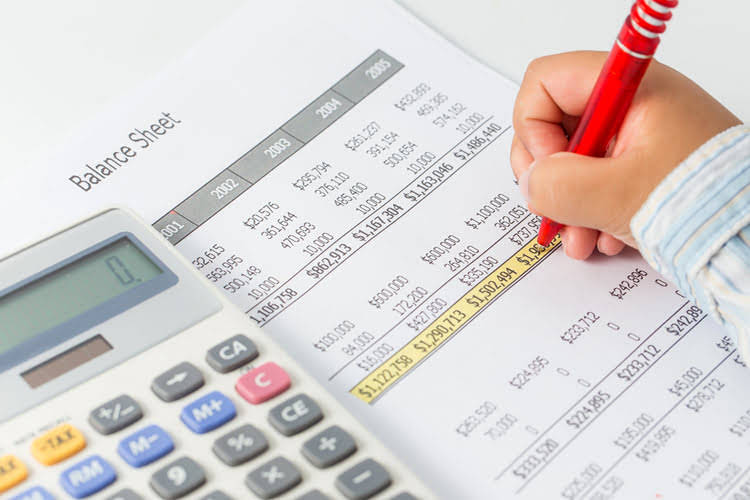
Hence, in this journal entry, both total assets and total owner’s equity on the balance sheet decrease by the same amount. Expense accounts represent the costs incurred by a business to generate revenue. Examples include rent expense, salaries expense, or utilities expense. Expenses have a debit normal balance because they decrease equity. An increase in an expense is recorded as a debit, and a decrease is recorded as a credit. Liabilities represent obligations a business owes to external parties.
What Is a Normal Balance in Accounting?

It helps ensure accurate recording, consistent classification, and reliable reporting of financial transactions. By understanding the normal balances of different accounts, accountants can maintain the integrity and usefulness of financial information. Assets, which are items of value owned by the business, have a normal https://woonextwpback.rickosoft.com/sales-tax-in-irvine-city-california-in-2025/ debit balance. This means that increases to asset accounts, such as cash or equipment, are recorded as debits, while decreases are recorded as credits. For example, when a business receives cash, the Cash account, an asset, is debited to increase its balance. To maintain the balance sheet equation, which states that the assets must equal liabilities plus equity, every transaction must be recorded with proper debits and credits.
What is the normal balance of a capital account?
- For 25 years I observed college students struggling with the bookkeeping and accounting terms “debit” and “credit”.
- Revenues (credits) and less expenses (debits) are reported on the income statement to derive net income.
- When it comes to the world of accounting, maintaining balance is of utmost importance.
- Conversely, decreases to liability accounts, such as paying off a loan, are recorded as debits.
- This includes accounts like Owner’s Capital or Retained Earnings.
- Every account in the double-entry accounting system has a normal balance, which refers to the side of the account (either debit or credit) where increases to that account are recorded.
- This credit entry increases the overall equity of the business.
Furthermore, we examined the role of normal balance in financial statements. By following the expected normal balances, accountants ensure that financial statements accurately represent the financial position, performance, and cash flows of the business. The relationship between normal balances and the categories of assets, liabilities, and equity ensures that the accounting equation remains in balance.

( . Capital/Equity accounts:
Recording an expense as a debit shows its reducing effect on equity. Normal balance shows how transactions flow through different accounts. This is vital for keeping accurate financial records and showing a company’s financial health. A solid understanding of debits and credits helps keep financial records clear and effective.

Can you identify whether the normal balance of each of the following accounts is a debit balance or a credit balance. Generally, the company or corporates pay dividends to its investors. It is paid out of the company’s retained earnings or free reserves and since it reduces the balance of reserves it is “Debited”. It is also recorded under financing activity under the cash flow statement. Some accounts have “Debit” Balances while the others have “Credit” balances. The normal account balance is nothing but the expectation that the specific account is debit or credit.
- Prepaying insurance, an asset, is debited because it promises future benefits.
- If this is done for every transaction and without errors, then all the amounts appearing in the accounts will have the total amount of debits equal to the total amount of credits.
- This balance forms the basis for reliable financial statements.
- It’s essentially what’s left over when you subtract liabilities from assets.
- Hence, instead of affecting the income statement like those expense or revenue transactions, the owner withdrawal affects the statement of owner’s equity instead.
- Whether you’re an entrepreneur or a seasoned business owner, understanding the normal balance of accounts is crucial to keeping your business’s financial health in check.
- Each type of account within the accounting system has an expected normal balance, which is either a debit or a credit.
Difference Between Banking and Accounting Perspectives
If the normal balance of an account is debit, we shall record any increase in that account on the debit side and any decrease on the credit side. If, on the other hand, the normal balance of an account is credit, we shall record any increase in that account on the credit side and any decrease on the debit side. These examples illustrate how each type of account is affected by debit and credit transactions based on their normal balances. Conversely, if you record normal balance of capital a transaction on the opposite side, it decreases the balance of the account. For example, when a business receives cash from a customer, the Cash account, an asset, is debited because assets have a normal debit balance. Revenue accounts, which reflect the income generated from business activities, have a normal credit balance because they increase equity.

Let’s say there were a credit of $4,000 and a debit of $6,000 in the Accounts Payable account. Since Accounts Payable increases on the credit side, one would expect a normal balance on the credit side. However, the difference between the two figures in this case would be a debit balance of $2,000, which is an abnormal balance. This situation could possibly occur with an overpayment to a supplier or an error in recording. Normalizing entries are typically made at the end of an accounting period to ensure that the financial statements accurately represent the business’s ongoing operations. These Remote Bookkeeping adjustments help remove distortions caused by extraordinary or non-recurring events, allowing for a more meaningful analysis of the business’s financial performance and trends.
The impact of understanding normal balances
Now the question is that on which side the increase or decrease in an account is to be recorded. The answer lies in the learning of normal balances of accounts and the rules of debit and credit. Different accounts have their own rules for a normal balance. To up an account’s value, entries must stick to a debit or credit rule. Yet, liabilities and equity, such as Common Stock, go up with credits.
Leave a Reply